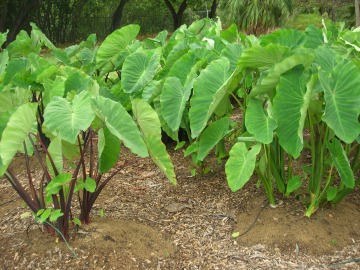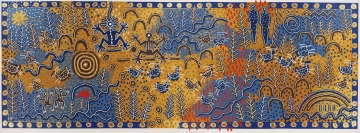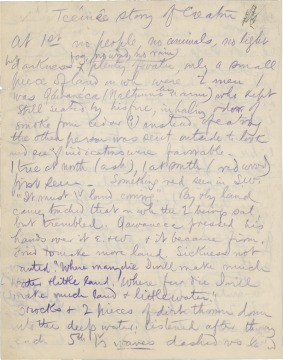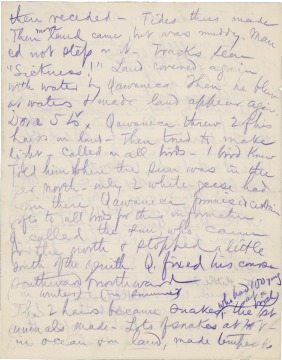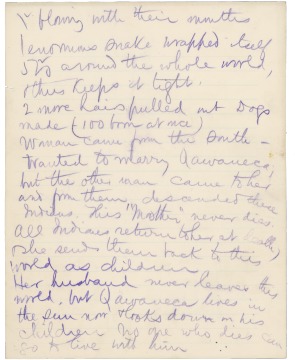Antiquity: Origins
Today, all tribes tell stories of their origins. There are as many creation stories as there are tribes, and there are thousands of tribes. The stories—which are generally told only at certain times of the year and then privately within the tribe—describe origins in the Americas, usually within the traditional lands of the narrators. Most of the stories are deeply rooted in oral tradition.
In Native Hawaiian tradition, Papa (Earth Mother) and Wakea (Sky Father) had a daughter named Ho‘ohokukalani. When her first pregnancy ended in miscarriage, her stillborn fetus was buried. The next morning, a plant never seen before had sprouted from the grave. This was the first taro plant. Ho‘ohokukalani’s next pregnancy was successful. The baby, who was named Haloa, was the first Hawaiian man. Native Hawaiians believe taro is their elder brother, a being to respect.
- Theme
- Land and Water
- Region
- Arctic, California, Great Basin, Great Plains, Hawai‘i, Northeast, Northwest Coast, Plateau, Southeast, Southwest, Subarctic
Taro plant
Courtesy Forest & Kim Starr
Creation Story, 2000, painting by Harry Fonseca, Nisenan Maidu/Native Hawaiian/Portuguese
Courtesy National Museum of the American Indian, Smithsonian Institution. Photo by Photo Services.
“Creation Myth,” Chemetunne, translated and recorded by American ethnologist and missionary James Owen Dorsey, ca. 1884
Courtesy National Anthropological Archives, Smithsonian Institution
“Creation Myth,” Chemetunne, translated and recorded by American ethnologist and missionary James Owen Dorsey, ca. 1884
Courtesy National Anthropological Archives, Smithsonian Institution
“Creation Myth,” Chemetunne, translated and recorded by American ethnologist and missionary James Owen Dorsey, ca. 1884
Courtesy National Anthropological Archives, Smithsonian Institution
